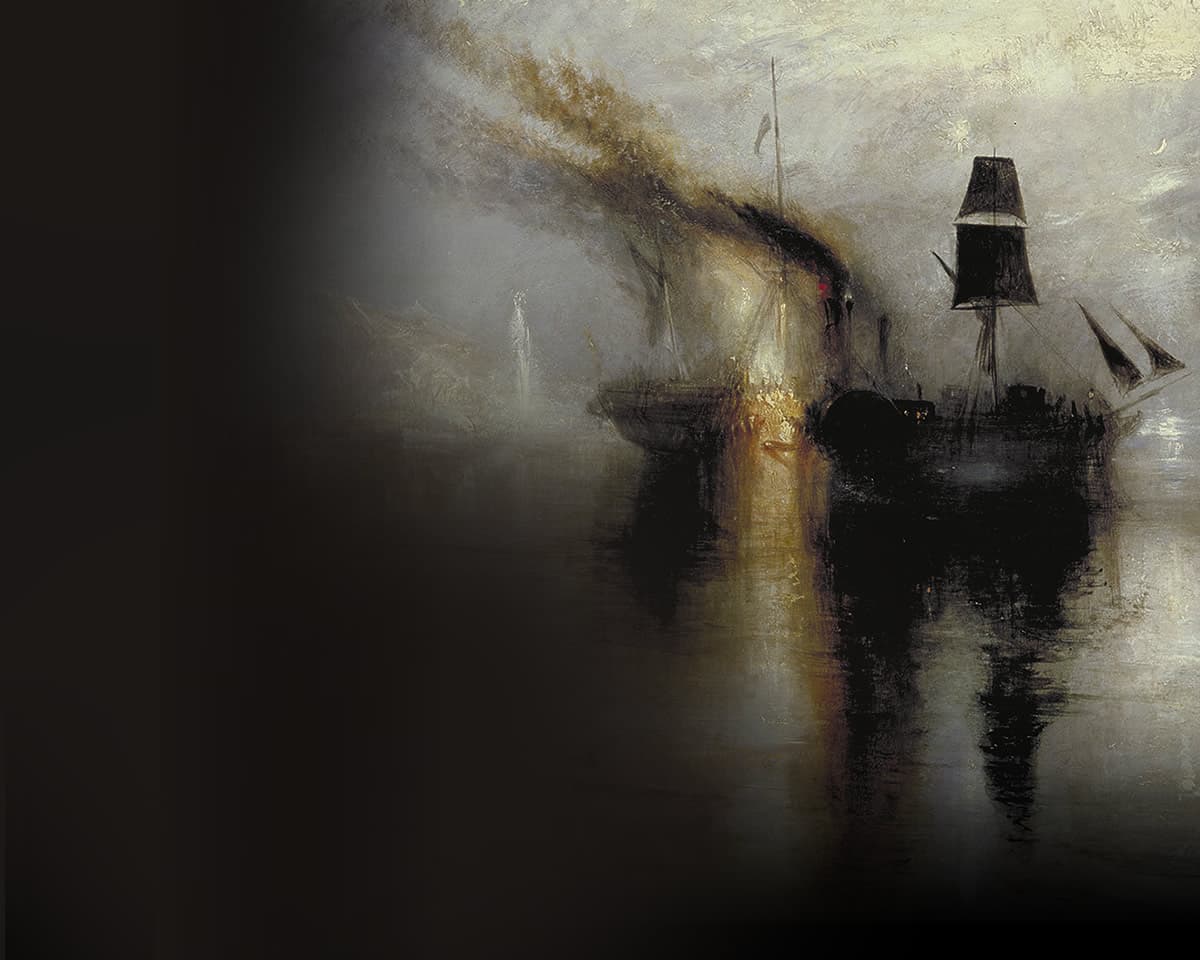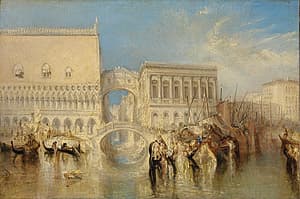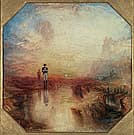Turner
masterclass series
Each Wednesday 17 July to 7 August
6.00 – 8.00 pm
A four-week series of Masterclass lectures by key academics and experts in J.M.W. Turner. This series is ideal for enthusiasts who want to delve deeply into the rich artistic content of the exhibition. The one-hour lectures are followed by an exhibition viewing from 7.00 – 8.00 pm.
Series $140, $120 concession, $100 members (includes four lectures and exhibition entries) | bookings essential | James O Fairfax Theatre and Temporary Exhibition Galleries
BOOK HERE
17 July
Lucina Ward,
Curator, National Gallery of Australia and coordinating curator of Turner from the Tate: The Making of a Master
A power supreme: Turner and the sea
Turner’s attraction to the sea and marine subjects is apparent from his first oil paintings exhibited at the Royal Academy. This presentation surveys his influences and strategies, focusing on the works in Turner from the Tate. It looks at Turner’s use of the Dutch marine traditions of the seventeenth century, his concentration on newsworthy events in his own time, and his experiences of travelling throughout Britain and on the Continent. Turner’s bold and expressive handling of paint is highly effective in his dramatic late seascapes, produced from the 1830s onwards. His series of dark and melancholic storms and shipwrecks, ghostly whaling ships and energetic scenes of Margate will be explored.
Lucina Ward is the National Gallery of Australia’s Curator for International Painting and Sculpture. She has been curator, co-curator or coordinating curator for projects including Abstract Expressionism (2012–13), Renaissance (2011–12), Masterpieces from Paris: Van Gogh, Gauguin, Cézanne and beyond (2009–10), Soft sculpture (2009), Turner to Monet (2008) and Bill Viola: The passions (2005). She has organised many collection displays, acquired works for the collection, published on many aspects of European and American art and, between 2006 and 2010, worked with James Turrell on a Skyspace for the Sculpture Garden.24 July
Dr Joyce Townsend,
Senior Conservation Scientist, Tate
Conserving Turner
Watercolour painting influenced all of Turner’s work in oil. An appreciation of the way he developed the practice and possibilities of this medium are key to understanding how Turner produced the larger oil paintings on which he was judged by his peers. The methods he chose have made the preservation of the oil paintings a great challenge. Conservation treatments which enable them to travel safely to Australia today have been developed by the conservators at Tate over recent decades. Dr Townsend will discuss examples of well-preserved and altered paintings, and will compare them to Turner’s watercolours, which in visual terms are often closer today to their intended appearance.
The talk will be illustrated with works from Tate’s large collection of watercolours and oils, bequeathed by the artist, and it will refer to many works in the exhibition Turner from the Tate.
Dr Townsend has been examining, documenting and analysing on Turner’s oil paintings and watercolours for over 25 years. She has also researched artists’ materials and their history, and has worked with materials historians and students to re-create some of the materials used by Turner, and to paint with them. More recently, she has been working with an Australian artist, Tony Smibert, using safer, modern materials that have similar properties to the poisonous ones used by Turner and his contemporaries. These strands of knowledge will be brought together to provide a description of the way Turner worked, the materials he used for painting, and his working processes in watercolour and oil.
31 July
Associate Professor Alison Inglis,
University of Melbourne
Passionate advocate: John Ruskin and J.M.W. Turner
"if you ... have no feeling for the glorious passages of mingled earth and heaven which Turner calls up before you into breathing tangible being, there is indeed no hope for your apathy, art will never touch you, nor nature inform."
The above passage is typical of John Ruskin’s fiery championship of the art of J. M. W. Turner. In this Masterclass lecture, Alison Inglis will investigate the complex relationship that existed between Ruskin and Turner, two of the most notoriously difficult characters in the art world of nineteenth-century Britain. As the leading art critic of his day, Ruskin played a vital role in transforming the reputation of the aging artist, Turner, whose late works did not always receive the popular success they enjoy today. Ruskin’s passionate advocacy of Turner’s “genius” will be examined through his writings on Turner's individual works, many of which are included in the current exhibition.
Alison Inglis is an Associate Professor in Art History at the University of Melbourne, where she has co-ordinated the Master of Art Curatorship program since 1995. Her primary research area is nineteenth-century British art but she has a strong interest in art collecting and patronage in Australia. She is particularly engaged by the role of art museums in Australian society, and has served on several boards, including Heide Museum of Modern Art and the National Gallery of Victoria.
Dr Inglis’ doctoral thesis was on the work of the English artist, Sir Edward Poynter, and her exhibitions include one with Ann Galbally on the foundation collections of Melbourne’s Public Library and National Gallery (1992). Her most recent publications are: ‘The Empire of Art’, The Victorian World (ed. M. Hewitt, Routledge 2012) and contributions to The Cambridge Companion to Australian Art (Cambridge University Press 2011).
7 August
Mary Kisler,
Senior Curator, Mackelvie Collection, International Art, Auckland Art Gallery
On the shoulders of giants - Turner and the masterly imagination
Under its first President, Joshua Reynolds, the Royal Academy in Britain stipulated that budding artists should study models from the past, whether classical Greece or Rome, or Renaissance and Baroque Europe. In doing so, the Academy was reinforcing a model well established in other academies abroad. Even today, artists often look to historical precedents, yet for an individual to make their own name they also have to strike out, to use the past for their own purposes.
As a master of the sublime, Turner can be compared to that seemingly wild yet cultivated genius of the 18th century, Salvator Rosa, and there are many other references within the stippled, scrubbed and dragged surfaces of his canvases. This paper looks at some of Turner's sources, his absorption of different styles and motifs, and how he, in turn, earned the title of ‘giant’.




